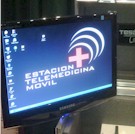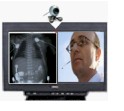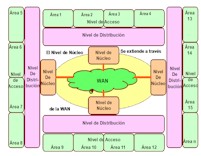| |
|
Upcoming events |
|
|
Preparation for the
Plenipotentiary Conference of the ITU |
|
|
The XX Meeting of the Working Group to Address
Regional Preparations for World Conferences and
Meetings shall take place in Washington DC, United
States of America on August 10 to 11, 2010.
The goal of the meeting is to consider and set out
the views of member states on the Plenipotentiary
Conference 2010 (PP-10) of the International
Telecommunication Union (ITU) documents and
issues, in addition to considering new proposals for
the conference and review the Inter-american
proposals (IAP).
The Plenipotentiary Conference is the top
policy-making body of the ITU. Held every four
years, the Conference:
- sets the Union's general policies,
- adopts four-year strategic and financial plans
and
- elects the senior management team of the
organization, the members of Council and the
members of the Radio Regulations Board.
The Plenipotentiary Conference is
the key event at which ITU Member States decide on
the future role of the organization, thereby
determining the organization's ability to influence
and affect the development of Information and
Communication Technologies (ICTs) worldwide.
|
|
more information |
|
|
Important issues |
|
An introduction to
Internet interconnection concepts and actors
By Internet Society |
|
|
The Internet is sometimes referred to as the
“network of networks”. This expression reflects the
very origin of the Internet as the interconnection
between existing networks. The possibility of easily
generating new interconnections with high bandwidth
at a reasonable cost has been one of the key
elements that allowed the fast evolution of the
Internet in the last twenty years, and it is central
to the continuous growth of the network. A good
interconnection not only has technical benefits, but
it also allows innovation, attracts investments and
fosters the local ICT (Information and
Communications Technologies) community. |
|
more information |
|
Mobile Telemedicine
Station (ETMo)
By Marcelo Petrich, Coordinator of the
Telehealth Network of the Americas of PCC.I |
|
|
 During
PCC.I in the city of Usuahia, we presented three
documents through the Telehealth in the Americas
Network. One of them, in particular, dealt
specifically with the Mobile Telemedicine Station
(Spanish acronym: ETMo) designed especially for
difficult-to-reach or unprotected places, or areas
hit by natural disasters or catastrophes. During
PCC.I in the city of Usuahia, we presented three
documents through the Telehealth in the Americas
Network. One of them, in particular, dealt
specifically with the Mobile Telemedicine Station
(Spanish acronym: ETMo) designed especially for
difficult-to-reach or unprotected places, or areas
hit by natural disasters or catastrophes.
This station has a number of
different medical outposts, which are the same tools
as those used in traditional semiology, but
technologically adapted. They enable the station to
transmit from a remote place the pictures that the
observer takes where the patient is located to a
specialist in the Faculty of Medicine. Combined with
a good clinical history, the result may be a better
and more accurate diagnosis.
|
|
more information |
|
Connecting America: The
National Broadband Plan in USA
By Federal Communications Commission (FCC) |
|
|
Like electricity a century ago, broadband is a
foundation for economic growth, job creation, global
competitiveness and a better way of life. It is
enabling entire new industries and unlocking vast
new possibilities for existing ones. It is changing
how we educate children, deliver health care, manage
energy, ensure public safety, engage government, and
access, organize and disseminate knowledge. |
|
more information |
|
Web of communication
facilitators of indigenous people of the Republic of
Argentina
By Laura Travascio, Co-coordinator of the
Question |
|

In Argentina, today inhabit 36 Native Peoples who
speak 16 different languages. These towns are mostly
invisible and in a situation of inequality
communication, among other reasons, for lack of
space in the media and have little access to new
Information Technology and Communications (ICT).
During 2009, teams of communicators of Native
Peoples throughout Argentina, grouped generating
spaces for dialogue with the Government, and
demanded the right to "communication with identity"
to express and recover the vast linguistic and
cultural diversity of our country.
|
|
more information |
|
What is telemedicine?
By Daniel Rosas, TES América |
|
 The
need to extend health coverage in several medical
specialties to remote locations, where distance is
critical, is a need identified and felt in Colombia
and Latin America that demands creative and
innovative solutions. The
need to extend health coverage in several medical
specialties to remote locations, where distance is
critical, is a need identified and felt in Colombia
and Latin America that demands creative and
innovative solutions.
Telemedicine is a general concept, which includes
any medical activity, including distance, in fact it
is not a totally new concept. In the past any
physician-patient interaction through a phone, to
give a recommendation or statement (go urgently to
hospital ) can be considered as telemedicine.
|
|
more information |
|
|
Training |
|
Architecture of Distributed
LANs
By
Osvaldo Aníbal Pérez, Centro de Capacitación en Alta
Tecnología (CCAT) |
|
 LANs
have been in widespread use in business, and now
cover the entire physical space occupied by a
company. LANs were originally created to provide
service over very limited distances—such as inside a
building or on a campus, using a single-segment
network or a very limited set of segments connected
by a routing device. However, there is currently a
need for transparent LAN technology interconnection
throughout the organization, and this includes the
idea that transparency should be maintained through
WAN connections where necessary. LANs
have been in widespread use in business, and now
cover the entire physical space occupied by a
company. LANs were originally created to provide
service over very limited distances—such as inside a
building or on a campus, using a single-segment
network or a very limited set of segments connected
by a routing device. However, there is currently a
need for transparent LAN technology interconnection
throughout the organization, and this includes the
idea that transparency should be maintained through
WAN connections where necessary. |
|
more information |
|
Scholarships of OAS/CITEL for
telecommunication courses
By Carol Dolinkas, General Coordinator of
Human Resources of CITEL |
|
|
At present 74 scholarships have been awarded the OAS
/ CITEL telecommunications courses in 2010. |
|
more information |
|
|
What's happening in the
region? |
|
|
Uruguay: Change in the National Numbering Plan |
|
|
It is reported that there will be a change in the
National Numbering Plan of Uruguay from 2:00 a.m. on
29 August 2010. Please find attached the full text
of the
National Numbering Plan of Uruguay, which was
approved by Resolution URSEC No. 429/04 of December
27, 2004, part of whose implementation changes are
communicated here. |
|
more information |
|
|
New Associate Members of CITEL |
|
|
México: América Móvil S.A.B. de C.V. |
|
|
On
June 9, 2010 América Móvil S.A.B.
de C.V.
became an associate
member of PCC.I and PCC.II.
América Móvil S.A.B. de C.V. is the Mexican
company leader in the mobile telecommunications
sector in Latin America and the third largest in the
world in terms of proportionate subscribers. It has
operations in 18 countries of the Americas, more
than 206 million wireless subscribers, more than 3.7
million fixed lines in Central America and the
Caribbean, and coverage for a population of more
than 800 million people.
In an effort to provide the best coverage and
quality services for its customers, America Movil
has invested resources in developing an extensive
network of cellular voice and data throughout Latin
America. Since its inception, the company has
invested over 20 billion dollars in its operations,
thus demonstrating its commitment to the region. |
|
|
|
| |
|

 During
PCC.I in the city of Usuahia, we presented three
documents through the Telehealth in the Americas
Network. One of them, in particular, dealt
specifically with the Mobile Telemedicine Station
(Spanish acronym: ETMo) designed especially for
difficult-to-reach or unprotected places, or areas
hit by natural disasters or catastrophes.
During
PCC.I in the city of Usuahia, we presented three
documents through the Telehealth in the Americas
Network. One of them, in particular, dealt
specifically with the Mobile Telemedicine Station
(Spanish acronym: ETMo) designed especially for
difficult-to-reach or unprotected places, or areas
hit by natural disasters or catastrophes. 
 The
need to extend health coverage in several medical
specialties to remote locations, where distance is
critical, is a need identified and felt in Colombia
and Latin America that demands creative and
innovative solutions.
The
need to extend health coverage in several medical
specialties to remote locations, where distance is
critical, is a need identified and felt in Colombia
and Latin America that demands creative and
innovative solutions. LANs
have been in widespread use in business, and now
cover the entire physical space occupied by a
company. LANs were originally created to provide
service over very limited distances—such as inside a
building or on a campus, using a single-segment
network or a very limited set of segments connected
by a routing device. However, there is currently a
need for transparent LAN technology interconnection
throughout the organization, and this includes the
idea that transparency should be maintained through
WAN connections where necessary.
LANs
have been in widespread use in business, and now
cover the entire physical space occupied by a
company. LANs were originally created to provide
service over very limited distances—such as inside a
building or on a campus, using a single-segment
network or a very limited set of segments connected
by a routing device. However, there is currently a
need for transparent LAN technology interconnection
throughout the organization, and this includes the
idea that transparency should be maintained through
WAN connections where necessary.